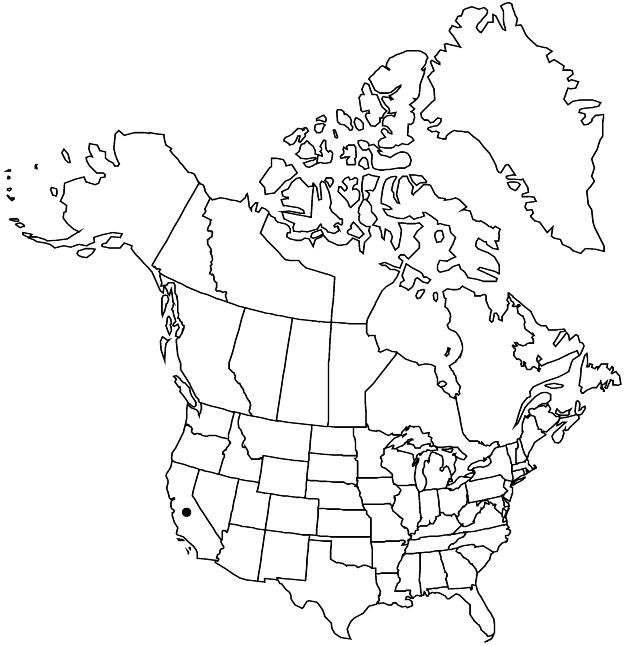Difference between revisions of "Lyonothamnus floribundus"
Proc. Amer. Acad. Arts 20: 292. 1885.
FNA>Volume Importer |
FNA>Volume Importer |
||
| Line 21: | Line 21: | ||
|name=Lyonothamnus aspleniifolius | |name=Lyonothamnus aspleniifolius | ||
|authority=Greene | |authority=Greene | ||
| − | }}{{Treatment/ID/Synonym | + | }} {{Treatment/ID/Synonym |
|name=L. floribundus subsp. aspleniifolius | |name=L. floribundus subsp. aspleniifolius | ||
|authority=(Greene) P. H. Raven | |authority=(Greene) P. H. Raven | ||
| − | }}{{Treatment/ID/Synonym | + | }} {{Treatment/ID/Synonym |
|name=L. floribundus var. aspleniifolius | |name=L. floribundus var. aspleniifolius | ||
|authority=(Greene) Brandegee | |authority=(Greene) Brandegee | ||
| Line 43: | Line 43: | ||
|distribution=Calif. | |distribution=Calif. | ||
|discussion=<p>Of conservation concern.</p><!-- | |discussion=<p>Of conservation concern.</p><!-- | ||
| − | --><p>On Santa Catalina Island, most plants of Lyonothamnus floribundus have most leaves not divided into leaflets and have been called forma, subsp., or var. floribundus. Plants with most leaves palmately or pinnately divided, usually with 3–5(–7), pinnately lobed leaflets, have been called forma, subsp., or var. aspleniifolius; such plants are known from San Clemente, Santa Catalina, Santa Cruz, and Santa Rosa islands. Continuity of variation in leaf form in L. floribundus has been documented by T. S. Brandegee (1890) and others. J. M. Bushakra et al. (1999) noted genetic similarity among clones.</p> | + | --><p>On Santa Catalina Island, most plants of <i>Lyonothamnus floribundus</i> have most leaves not divided into leaflets and have been called forma, subsp., or var. floribundus. Plants with most leaves palmately or pinnately divided, usually with 3–5(–7), pinnately lobed leaflets, have been called forma, subsp., or var. aspleniifolius; such plants are known from San Clemente, Santa Catalina, Santa Cruz, and Santa <i>Rosa</i> islands. Continuity of variation in leaf form in <i>L. floribundus</i> has been documented by T. S. Brandegee (1890) and others. J. M. Bushakra et al. (1999) noted genetic similarity among clones.</p> |
|tables= | |tables= | ||
|references= | |references= | ||
| Line 67: | Line 67: | ||
|publication year=1885 | |publication year=1885 | ||
|special status=Conservation concern;Endemic;Selected by author to be illustrated | |special status=Conservation concern;Endemic;Selected by author to be illustrated | ||
| − | |source xml=https://jpend@bitbucket.org/aafc-mbb/fna-data-curation.git/src/ | + | |source xml=https://jpend@bitbucket.org/aafc-mbb/fna-data-curation.git/src/8f726806613d60c220dc4493de13607dd3150896/coarse_grained_fna_xml/V9/V9_569.xml |
|subfamily=Rosaceae subfam. Amygdaloideae | |subfamily=Rosaceae subfam. Amygdaloideae | ||
|tribe=Rosaceae tribe Lyonothamneae | |tribe=Rosaceae tribe Lyonothamneae | ||
Revision as of 19:17, 18 September 2019
Leaves: petiole 12–35 mm, often distally winged, wings often lobed, base attenuate to rounded; in lobed blades, lobes oblong-rounded to broadly falcate-acute or almost triangular, base broadly sessile along axes, margins near bases often overlapping, surfaces: abaxial tomentose, tardily glabrescent, adaxial tomentulose, soon glabrescent. Flowers: sepals 1.5–2 mm; stamens 2 mm, filaments unequal. 2n = 54.
Phenology: Flowering May–Jul.
Habitat: Canyons, ravines, ridges, and slopes in chaparral, oak woodlands, openings
Elevation: (20–)100–500+ m
Discussion
Of conservation concern.
On Santa Catalina Island, most plants of Lyonothamnus floribundus have most leaves not divided into leaflets and have been called forma, subsp., or var. floribundus. Plants with most leaves palmately or pinnately divided, usually with 3–5(–7), pinnately lobed leaflets, have been called forma, subsp., or var. aspleniifolius; such plants are known from San Clemente, Santa Catalina, Santa Cruz, and Santa Rosa islands. Continuity of variation in leaf form in L. floribundus has been documented by T. S. Brandegee (1890) and others. J. M. Bushakra et al. (1999) noted genetic similarity among clones.
Selected References
None.

